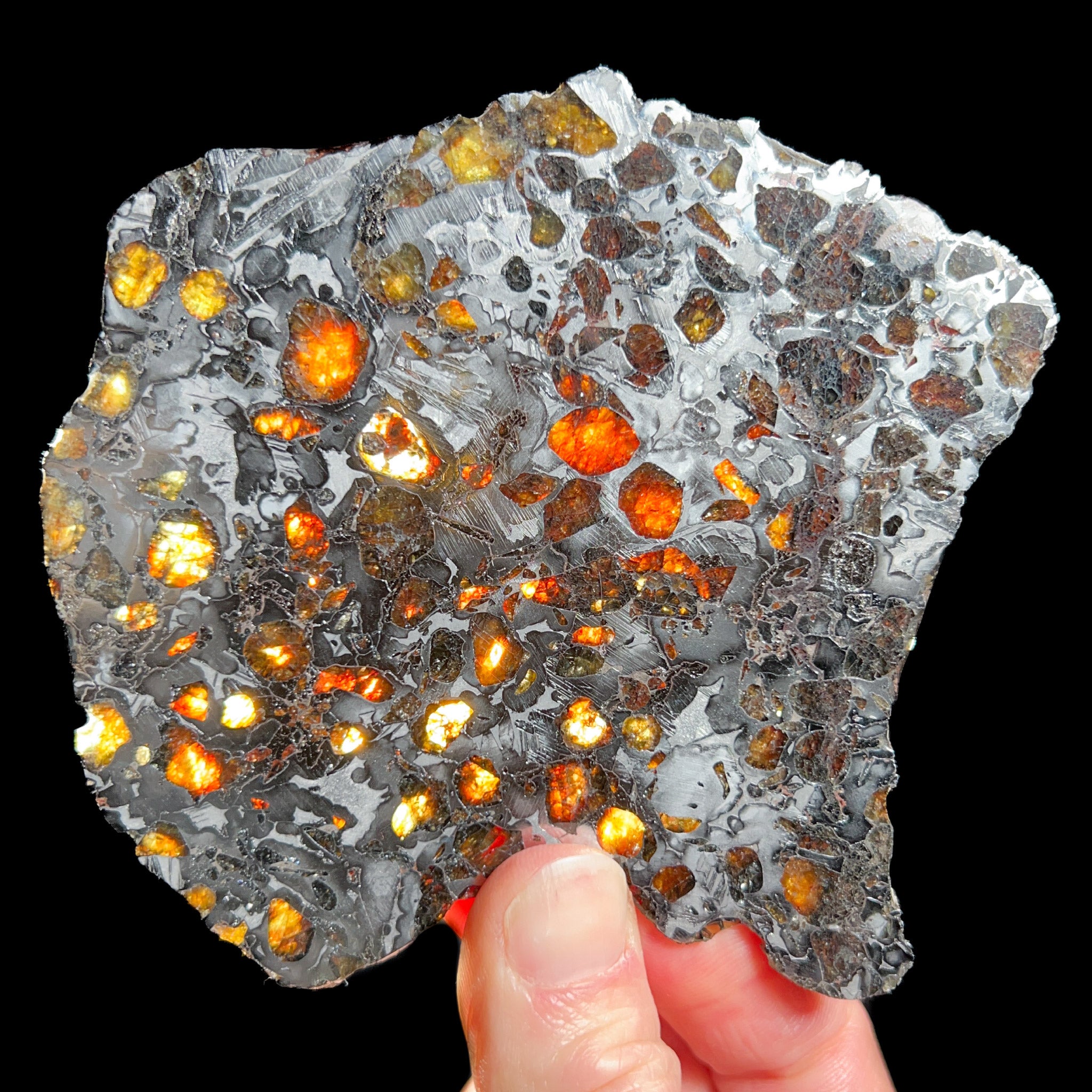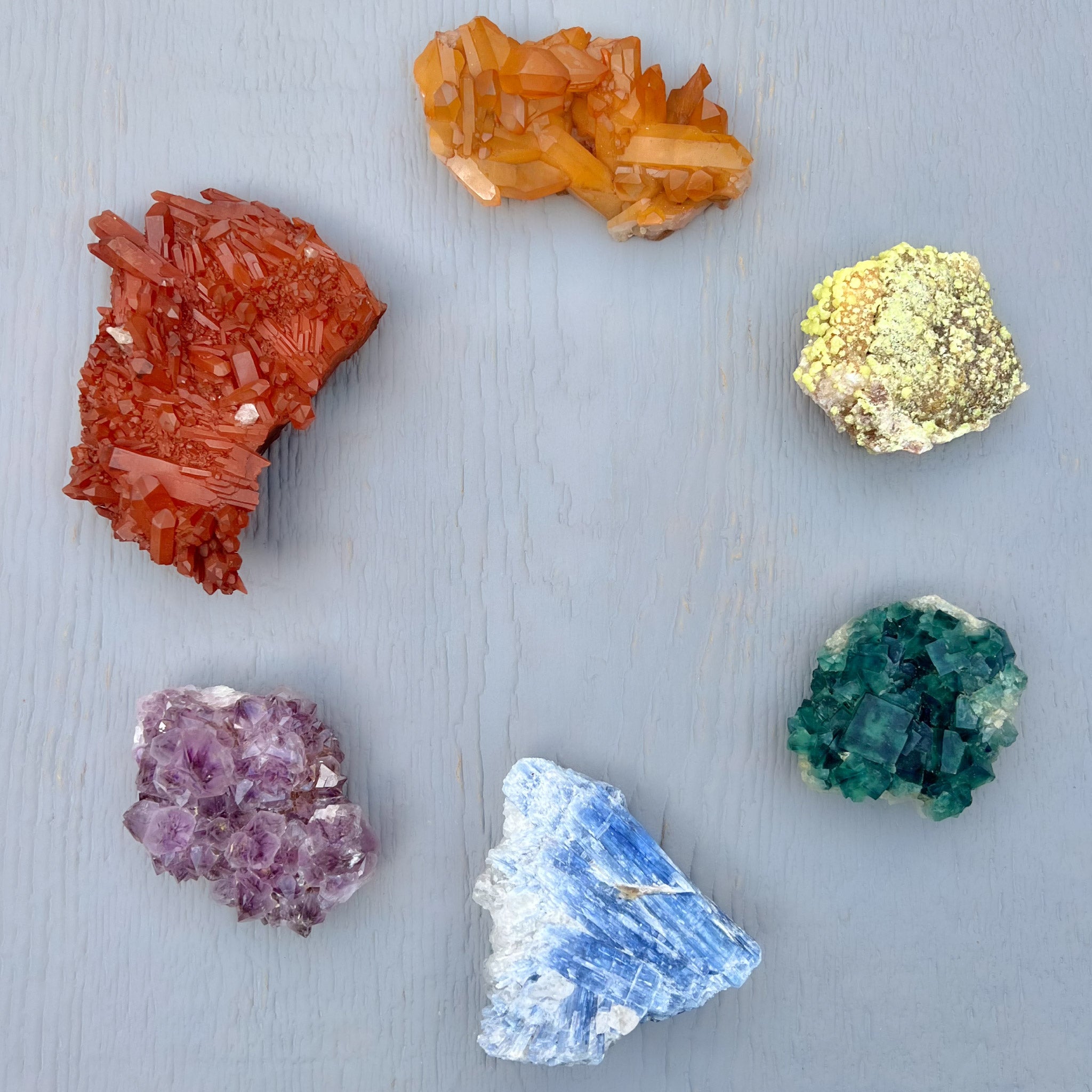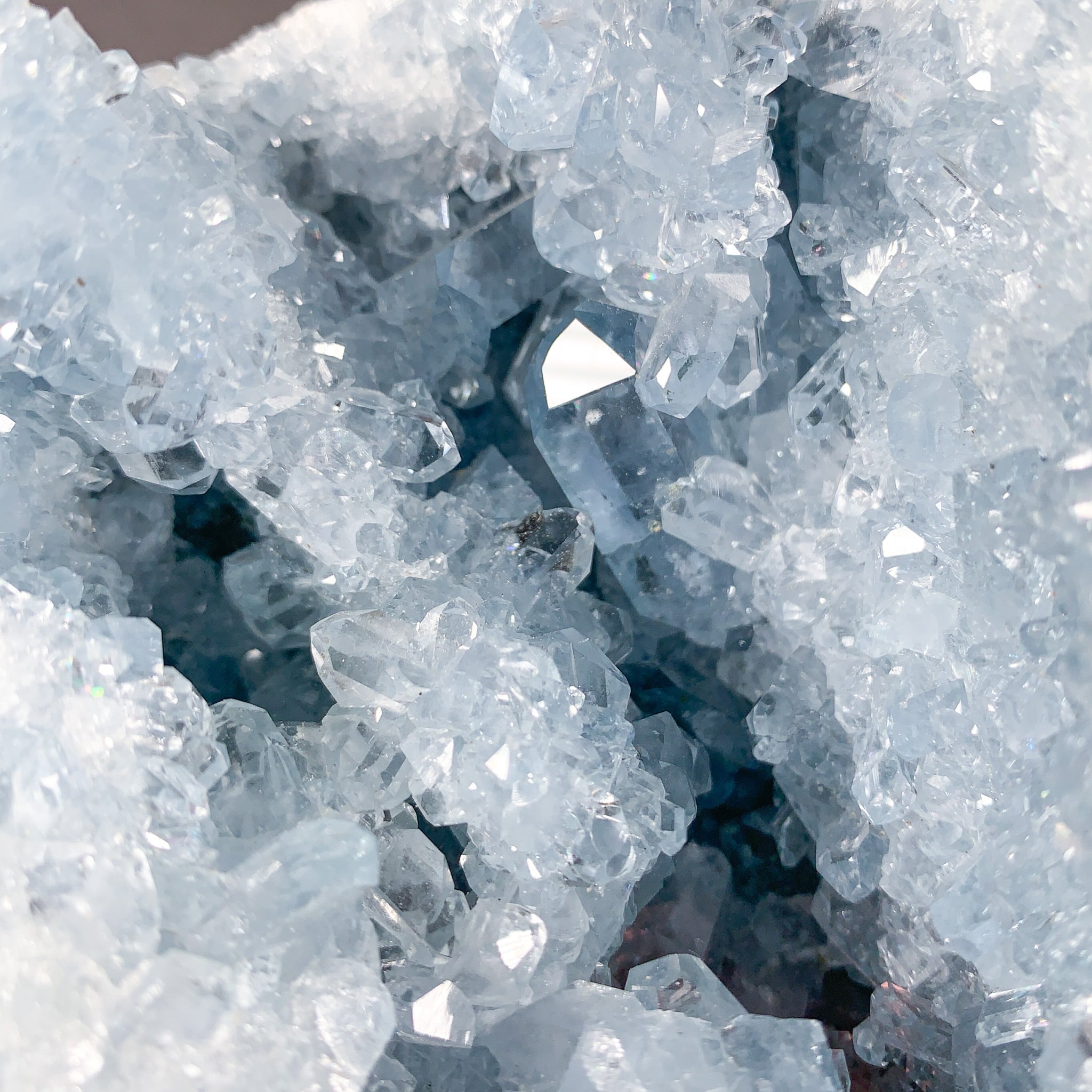Space Rocks!
We look at a LOT of different types of rocks here at Unearthed, but these are truly out of this world....literally! Meteorites are both fun to collect and examine, as each one has unique structures and patterns. Today we'll explore what the difference is between a Meteor and a Meteorite, what they are, and how they ended up on Earth.
What is a Meteorite?
Meteor? Meteorite? Which one is it? Lets take a look at some different space-rock terminology to better understand what classifies as a "meteorite". We'll start with the rock body as it is furthest out in space, and work our way to Earth from there!
Meteoroid / Asteroid
Meteoroids are dust grains to small asteroids in our solar system, which NASA says to think of as “space rocks”. Asteroids are comprised of metals and rock, whereas comets are composed of rocky material, ice and space dust.
Meteor
Meteors are when meteoroids enter Earth’s atmosphere at high speed and burn up, the fireballs or “shooting stars” are called Meteors.
Meteoroite
Meteorites are when a meteoroid survives a trip through the Earth's atmosphere and hits the ground. Once it hits the ground, it is then called a meteorite.
Almost 99% of meteorites recovered on Earth originated from asteroids, or rocky objects that orbit the sun (smaller than planets). Some meteorites are more rare and valuable than others because of the size / quantity of material recovered, distinct features, etc.

Where Do Meteorites Come From?
All meteorites recovered on Earth have come from inside of our solar system. Most meteorites are fragments of asteroids that broke apart long ago within the asteroid belt, which is located between Mars and Jupiter. These fragments often orbit the Sun for millions of years before colliding with Earth. Quite the galactic journey!
How Do Meteorites Form?
Most meteorites are fragments from the asteroid belt that broke apart and have been orbiting the Sun for millions of years. While most meteorites originated from asteroids, some have originated from the Moon and Mars. Lunar Meteorites are nearly identical to the samples brought back from lunar missions. Meteorites from Mars also can be identified by their similarity in composition to those samples retrieved from the Mars Viking Probe.
Are There Different Types of Meteorites?
Yes! While all meteorites are rocks from space, their compositions can vary greatly. Here are the main varieties of meteorites:
Iron Meteorites - contain almost 98% metal
Stony-Iron meteorites - contain a mixture of metal and other minerals, specifically silicate minerals like Olivine
Stony Meteorites - contain mostly silicate minerals
Iron Meteorites are believed to have formed within the cores of asteroids. The prevailing theory is that many asteroids were melted during the decay of radioactive elements in our solar system. As the asteroids melted, the dense iron portions of the asteroids sank to the center of the feature, creating a metallic core. Similar to Earth, it is believed these asteroids had a dense iron-rich core, with surrounding silicate mantles and crust.
Stony-Iron Meteorites which consist of an almost equal mixture of iron-nickel metals and silicate minerals are considered to be the most beautiful of the meteorites. Gemmy inclusions of the mineral Olivine or Peridot can be found in Pallasite Meteorites.

They are thought to represent the boundary between the metal-rich core of an asteroid and the silicate-rich mantle around it. However, some scientists believe these types of formations may have formed by impact melting.
Stony Meteorites consist largely of silicate minerals, with two main types, Chondrites and Achondrites. Chondrites have a distinct appearance that looks almost granular like grains of sand on a beach. Their composition is largely silicate minerals mixed with small grains of iron-nickel metal. They have been dated at over 4 billion years old, and are considered to be some of the oldest and most pristine rocks in our solar system, as they have not been subjected to melting.
Achondrites on the other hand, have underwent melting over their celestial journey. They are believed to be igneous in origin, melted into magma, and then crystallized and cooled.
How Big are Meteorites?
Meteorites can vary in size from tiny pebbles to feet in length. In fact, one of the largest meteorites ever discovered, the Hoba meteorite in Namibia, is estimated to weigh almost 60 tons and is over 8 feet long!
What is a Pallasite Meteorite?
A Pallasite Meteorite is a special variety of meteorite that contains Olivine crystals of gem quality Peridot, which is “floating” in an iron-nickel matrix. This type of meteorite consists of Meteoric iron and Olivine, which is a common synonym for a member of the Fayalite-Forsterite Series. Sometimes, but not always, Chromite, Schreibersite, and Troilite can also be found in Pallasite Meteorites.
Below is an example of a terrestrial specimen of Olivine / Peridot from Arizona, USA. This same mineral has been found inside Pallasite Meteorites!

Two prevalent theories explain how Pallasite Meteorites may have formed with the presence of Olivine. One theory is that Pallasite Meteorites originated at the core-mantle boundary of asteroids that were then shattered through impacts. Another theory is that Pallasite Meteorites are impact-generated mixtures of core and mantle materials.
With either scenario, it is likely that the host rock in which the Pallasite Meteorites originated from likely had a very similar internal structure to Earth.
Below is an example of the Olivine / Peridot crystals inside a slice of Meteorite!

What Are All Those Funny Markings On Meteorites?
Not all, but some meteorites when cut and polished reveal incredible crystalline structures inside! But what are they and how did they get there?
Widmanstatten Formation / Structure
The intricate criss-crossing patterns called Widmanstatten formations or Thomson structures are figures of long nickel-iron crystals found in some, but not all, meteorites. It is a mixture of interweaving Kamacite (native iron!) and Taenite bands or ribbons called "lamellae".
It is believed extremely slow cooling (potentially millions of years) allowed these two metal alloys to form this intricate inter-growth. The pattern is completely natural, but further revealed when certain meteorites are cut, polished and acid-etched like the specimen shown below.

Conclusion
Meteorites are an amazing group of stones that travelled an incredible journey to reach Earth. Millions of years in the making, and revealing wild crystal structures inside, Meteorites are a fun addition to any rock collection. Grab one for yourself and see what sort of intergalactic secrets they unlock!




